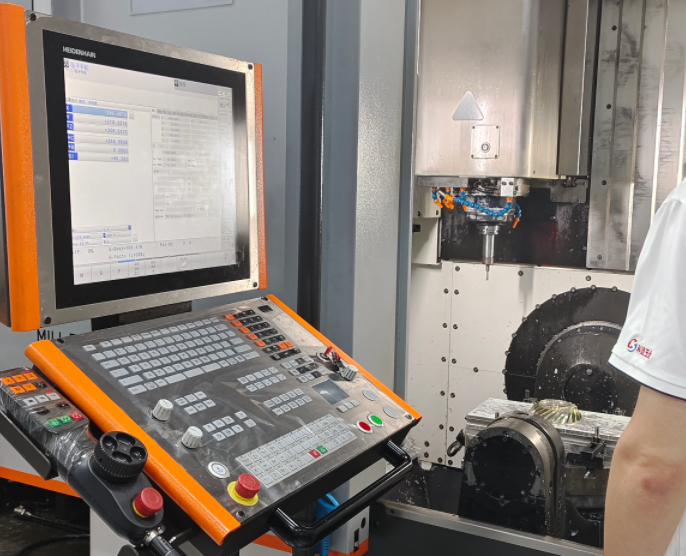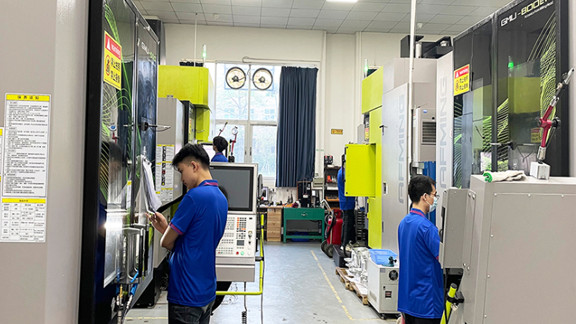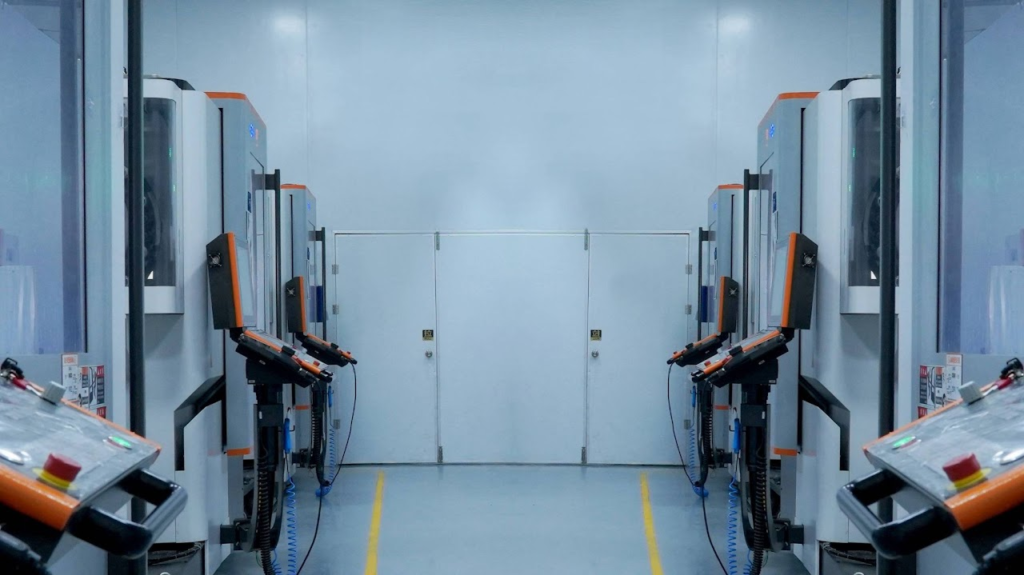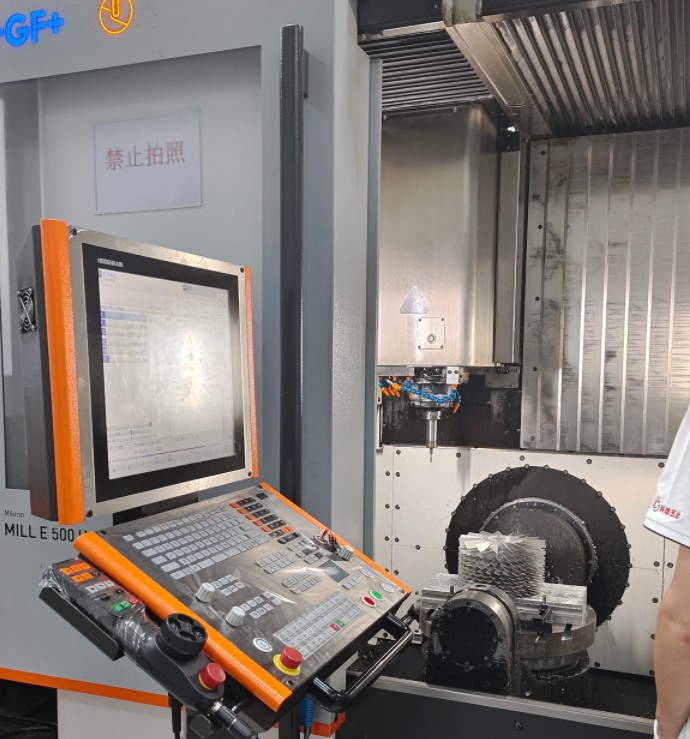Five-axis machining is critical for producing complex components like impellers, used in aerospace, energy, and automotive industries. Imported five-axis equipment, such as Swiss Mikron and Hermle five-axis machining centers, offers significant advantages in impeller production. This article provides a technical, systematic analysis of these benefits, emphasizing precision, efficiency, versatility, and quality, supported by specific parameters.
Enhanced Precision and Accuracy
Impellers feature complex geometries, including curved blades and thin walls, requiring high precision. Imported five-axis equipment, like the Mikron MILL P 800 U, achieves tolerances within ±0.005 mm due to its simultaneous five-axis movement (X, Y, Z, A, B). This ensures optimal tool contact, minimizing errors. The Hermle C 42 U, with its Heidenhain TNC 640 controller, supports dynamic toolpath adjustments via tool center point control (TCPC), compensating for geometric deviations.
Direct-drive motors in these machines reduce backlash, achieving rotational accuracy of 0.0001 degrees, compared to gear-driven systems. For instance, the Mikron’s polymer concrete base minimizes vibration, ensuring surface finishes with Ra values as low as 0.2 µm. This precision is critical for impellers in turbochargers operating at 75,000 RPM, where balance and longevity are paramount.

Improved Efficiency Through Single Setup
Traditional three-axis machining requires multiple setups for impellers, increasing cycle times. Mikron and Hermle five-axis centers enable single-setup machining, accessing all surfaces, including undercuts, in one operation, reducing setup times by up to 70%. The Hermle C 52 U handles workpieces up to 2,000 mm in diameter and 2,000 kg, ideal for large impellers, with a 50 RPM B-axis and 1,200 RPM C-axis for rapid repositioning.
Five-axis plunge roughing aligns cutting forces, reducing tool deflection and extending tool life by 30-50%. For example, the Mikron HSM 600U achieves material removal rates up to 500 cm³/min for aluminum alloys, cutting machining time significantly. This efficiency suits high-volume impeller production.
Versatility in Material and Design
Impellers use materials like stainless steel, titanium, aluminum, and composites, each with unique machining demands. Mikron and Hermle machines handle these effectively, with spindles delivering 15-40 kW and speeds up to 24,000 RPM. For titanium impellers, the Hermle C 42 U’s high-torque spindle (up to 1,250 Nm) supports low-speed cutting, while the Mikron MILL E 700 U’s high-speed spindle excels for aluminum.
These machines adapt to diverse impeller designs, from closed impellers to open impellers with thin blades (0.5 mm thick). Integration with CAD/CAM software like Siemens NX ensures precise toolpaths for complex geometries. The table below outlines material capabilities:
| Material | Spindle Speed (RPM) | Power (kW) | Typical Application |
|---|---|---|---|
| Stainless Steel | 8,000-12,000 | 20-30 | Pump impellers |
| Titanium | 2,000-6,000 | 25-40 | Aerospace impellers |
| Aluminum | 15,000-24,000 | 15-25 | Turbocharger impellers |
| Composites | 10,000-18,000 | 15-20 | Energy sector impellers |

Mikron and Hermle Five-Axis Machining Centers
Mikron and Hermle five-axis machining centers are engineered for impeller machining, offering robust features that enhance performance. The Mikron MILL P 800 U features a gantry design with a polymer concrete base, providing rigidity for high-precision tasks. Its Step-Tec spindle, with speeds up to 20,000 RPM and 36 kW power, supports high-speed milling of aluminum impellers, while its 120-tool magazine enables seamless tool changes, reducing downtime by 25% compared to standard setups.
The Hermle C 42 U, with its modified gantry frame, supports workpieces up to 800 mm in diameter and 550 kg. Its Heidenhain TNC 640 controller offers advanced functions like dynamic efficiency, optimizing feed rates for complex impeller geometries. The machine’s 18,000 RPM spindle and 1,250 Nm torque handle titanium impellers effectively. Both machines feature integrated automation options, such as pallet changers, enabling continuous operation for high-volume production.
On-machine probing, with accuracy of ±0.001 mm, ensures real-time dimensional verification, meeting standards like AS9100. These features make Mikron and Hermle ideal for impellers requiring intricate blade profiles and tight tolerances.

Reduced Tool Wear and Maintenance
Tool wear is a challenge in impeller machining due to complex geometries and hard materials. Mikron and Hermle machines optimize cutting strategies, using shorter tools by tilting the workpiece, reducing vibration and extending tool life by up to 40%. Carbide tools in these setups last 100-150 hours, compared to 60-80 hours in three-axis systems.
Maintenance is efficient with features like Mikron’s semi-automatic lubrication and Hermle’s high-capacity cooling systems, maintaining spindle temperatures below 40°C. These systems ensure over 20,000 hours of operation before major servicing, minimizing downtime.
Cost-Effectiveness Despite Higher Initial Investment
Mikron and Hermle five-axis machines, priced between $150,000 and $600,000, are costlier than three-axis systems. However, single-setup machining reduces labor costs, and high material removal rates lower per-part costs. For 100 impellers, cycle times drop by 50%, saving thousands. The table below compares cost benefits:
| Parameter | Five-Axis Machining | Three-Axis Machining |
|---|---|---|
| Setup Time (hours) | 1-2 | 4-6 |
| Cycle Time per Impeller (minutes) | 30-45 | 60-90 |
| Tool Life (hours) | 100-150 | 60-80 |
| Labor Cost per Batch ($) | 500-700 | 1,000-1,500 |
Conclusion
Imported five-axis equipment, such as Mikron and Hermle machining centers, offers unmatched advantages for impeller machining. Their precision, efficiency, versatility, and robust features make them ideal for complex components. Despite higher initial costs, reduced cycle times, lower labor costs, and enhanced quality justify the investment. These machines are strategic assets for manufacturers optimizing impeller production across diverse applications.
